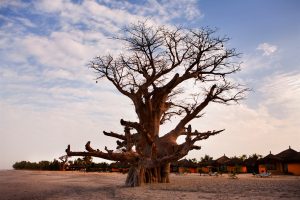- Nine of the 13 oldest and five of the six largest African baobabs have died, or their main stems collapsed
- The African baobab is the largest and oldest known angiosperm, or flowering plant
- Scientists do not know why they are dying, but suspect climate change
Nine of the 13 oldest and five of the six largest African baobabs have died, or their main stems collapsed.
Since 2005, an international team of researchers has investigated and dated practically all known very large and potentially very old African baobabs on the continent, about 60 trees in total. Using radiocarbon-dating, in which researchers date carbon atoms inside the tree stem, they found that baobabs’ unique architecture is responsible for their longevity. The baobab puts out new stems in the same way that other trees grow new branches. This creates a central ring-shaped cavity surrounded by stems, which can fuse to create a single trunk.
The researchers set out to date the trees, but discovered that they were dying in an “event of unprecedented magnitude”, they write.
The team does not believe that the deaths were caused by an epidemic, and suspect climate change in southern Africa. However, they call for more research.
Elsie Cruywagen, a researcher at the Agricultural Research Council in Pretoria, says that there have been many reports over the decades of baobabs dying in times of drought. “It is mostly the most conspicuous ones, the biggest and oldest ones, that have died in a relatively short time that is so striking.
The African baobab is the largest and oldest known angiosperm, or flowering plant.
Post published in: Environment


